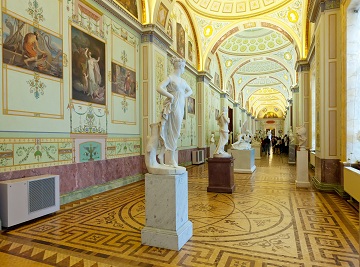Preserving cultural objects from harmful conditions

Related topics
Environment & climate action Innovation Austria Belgium Denmark Germany Ireland Italy Romania Spain United Kingdom Environment Norwaydate: 25/03/2014
Project: Measurement, Effect Assessment and Mitig...
acronym: MEMORI
See also: CORDIS
Contact: http://www.memori-project.eu/memori...
The project team put together in a single system two different dosimeters (an instrument that measures an object’s exposure to a range of radiations) that had been developed by two previous EU-funded projects. “One of the dosimeters was developed here at our institute – and this one reacts to traffic pollutants getting indoors from the outside environment. The second dosimeter, which was developed by the Fraunhofer Institute in Germany, detects acidic pollutants, often emitted from materials indoors,” says Dahlin.
The two-in-one dosimeters are placed in exhibition areas for a period of three months to give a true reading of the conditions. The readings are then analysed, using a “new technique that we have been able to develop,” adds Dahlin. “Previously, the information had to be sent back to the laboratories for analysis, and now, with this instrument, these analyses can be provided to the user directly.”
The MEMORI dosimeter reader is simply connected to a PC and a traffic-light system indicates the severity of the conditions. A green light means that the museum/exhibition area is fine. A yellow light indicates that there are some problems to be resolved, and a red light underlines the need to take corrective action urgently. “MEMORI researchers have also developed a set of guidelines that tell the user how to interpret the results,” says Dahlin.
At the end of the MEMORI system’s three-year development period, the museums working together with the project team showed interest in the early-warning tool. Museums and institutions such as English Heritage and the Tate in London, the Music, Film and Theatre Museum in Lithuania, the Reina Sofia in Madrid, the Picasso Museum in Paris and the Cultural History Museum in Oslo have all tested the new MEMORI dosimeter. The new tool has also been tried out by an end user in Tokyo.
NILU is confident that there is demand for the new tool, and a marketing plan has been developed by the project team. “We have applied for more funding because there are some steps that need to be taken before we can decide who is going to produce the equipment,” concludes Dahlin.
